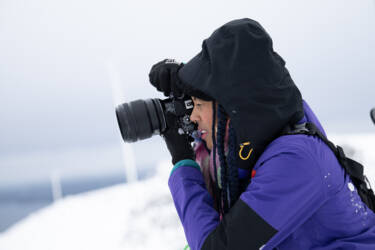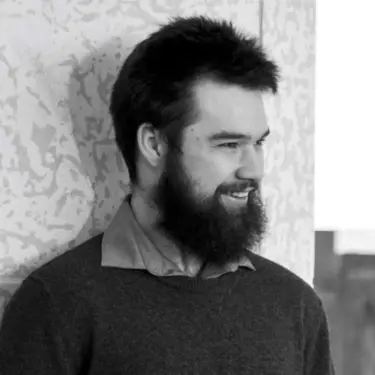Neurodiversity and the creative process

Neurodiversity, such as autism or ADHD, can bring challenges, but also ways of working that are an essential element of an individual’s creative process and central to the end product
Neurodiverse people can often find themselves excluded from parts of society and the economy, but things are thankfully changing, and nowhere more so than in the creative industries and arts sectors. Nikon magazine speaks to two neurodivergent photographers about their journeys with images, their passion for representation and inclusion and their advice and tips for others starting out on a similar path.
Lou Jasmine
London-based photographer and director Lou Jasmine, who has ADHD, says she was drawn to reportage through reading documentary-style photography books. “I was obsessed with music, books, biographies, actors’ biographies, film stuff,” she explains. “And in all of them, they have these great candid photos of people on set or hanging out in this hotel or in a café or something. And I thought, ‘Who is taking these really awesome photos? These are really cool.’”
Just because she was interested in these types of images didn’t mean Lou was immediately caught up in photography as a career path. After university, she worked on documentaries, where that wish to catalogue the whole experience just as much as the filming itself was part of what drew her back in.
“During one of the docs I was working on, I was given a camera by one of the DOPs to take some stills that they could use for the doc,” she says. “And then I remember running around with it being like, ‘Oh my God. This is great.’”

Lou Jasmine in action
Lou was also influenced by a friend who urged her to post a photo a day on Instagram. From there, she moved into doing music and gig-based shoots. Now, she works as both a director and a photographer. As a neurodivergent creative, she leans on a lot of systems, such as having an auto-bounce-back email that allows her to create a buffer between herself and inbound email. Another programme she has used to create more accessibility is the UK’s Access to Work scheme, which allows her to hire someone to manage administrative tasks that she can’t manage.
In the field, Lou finds that having someone who can gently nudge her to move to the next task boosts the accessibility of her shoots. “I think just being really clear about what my boundaries are is really important to me,” she explains. “Because I also struggle with perfectionism, like most of us, it is really important for me to have people around me who can say, ‘Listen, Lou, it’s OK. I think we’ve got this shot, we can move on.’”
Other strategies Lou uses include having her transport booked for her at the first available moment, so that she can decompress without the pressure of additional planning, as well as hiring post-production team members to assist with completing the shoot.
Lou’s top tip: speak up for yourself and find community
“As photography can be a lonely professional at time, don’t be afraid to speak up,” she concludes. “Connect with as many other photographers and neurodivergent creatives as possible.”
Lou’s kitbag: Nikon Z6II, Nikon Zf, Nikon Z30, Nikon F100, NIKKOR Z 24-70mm f/2.8 S, NIKKOR Z 85mm f/1.8 S.
Alfie Bowen
In his first experience of photography Alfie Bowen, who has autism, faced a common problem: the image he wanted to capture was not the type of image his camera – or his skillset – would allow. However, he was certain about what he wanted to photograph.
“I have always had an obsession with animals,” he says. “Indeed, my first word was ‘mallard’, after the duck species. But I was looking for another way to explore that obsession when I stumbled across my mum’s little compact camera and set about attempting to photograph wildlife.”
In 2015, Alfie was gifted a camera for Christmas, a day he says changed his life. His rise since then has been nothing short of meteoric. His practice is focused on a variety of wildlife, with stunning images of everything from primates to flamingos, and he recently released a book, Wild Horses, which took two years to complete. Alfie often works in black and white which, he says, allows him to focus on the personality of each individual animal.

Alfie Bowen with the NIKKOR Z 28-400mm f/4-8 VR
How Alfie comes to a project, and how he executes it, are things he attributes – in part – to his autism. “I notice every tiny detail about every single one of my subjects, about the conditions in which I’m photographing them and about the backdrop behind them,” he explains. “I have an incredibly vivid imagination thanks to my autism diagnosis, and this often results in me thinking of new images at the most random times.”
As a result, Alfie relies on sketching out an image, noting it down, so that his fast flow of creativity doesn’t leave an idea without a home. He says the beauty of the process is then in the execution. “It’s then about putting in the hours to turn those sketches into photographs in the field,” he says. “It can be a long mission, but the feeling when I have the final image is incredible.”
Alfie’s passions for wildlife and raising awareness of autism have also led to him working with various charities and becoming an in-demand public speaker, including at last year’s Nikon Photo London event.
Alfie’s top tip: lean into what you love and plan accordingly
“It helps me to be familiar with my kit, and plan well. Keeping the surprises to a minimum is great for keeping anxiety down, and creativity up!” Alfie explains. “I always say that you should photograph what you are familiar with and what you love. I always work best with what I know best. I know my subjects intimately, and that really benefits me when I go into the field.”
With his recent project’s singular focus on horses, Alfie says that he’s now relishing the chance to take pictures of other animals: “The project was intense and resulted in few opportunities to photograph anything other than horses for two years, so I have been enjoying photographing zebras, flamingo, lemurs and lions again in recent weeks.”
Alfie’s kitbag: Nikon Z9, Nikon Z6III, NIKKOR Z 70-200mm f/2.8 VR S, NIKKOR Z 100-400mm f/4.5-5.6 VR S and NIKKOR Z 14-24mm f/2.8 S.
Introducing the Nikon Family
Featured products

Unlock greater creativity












